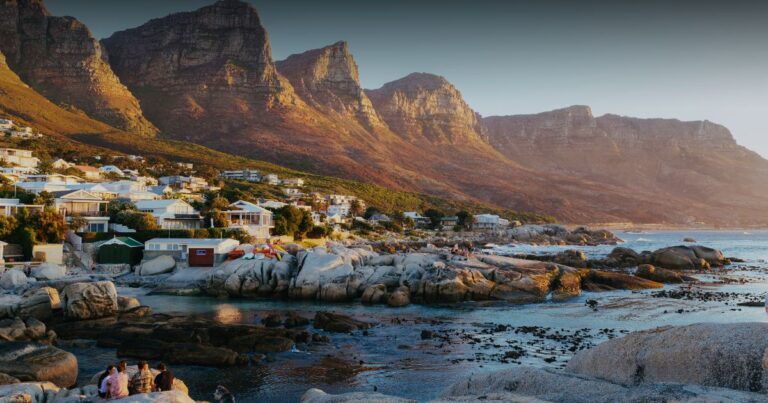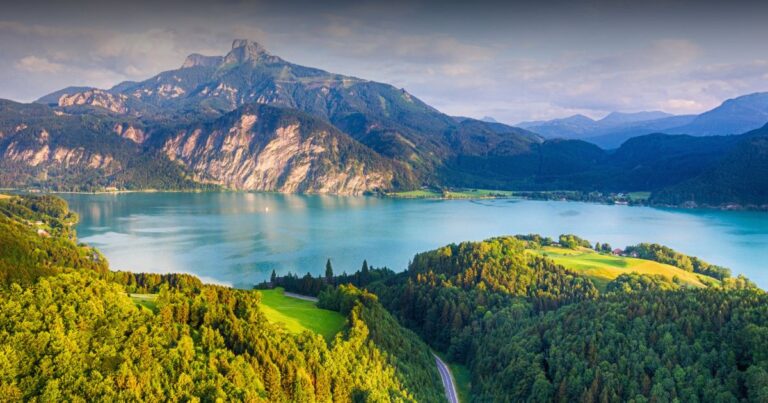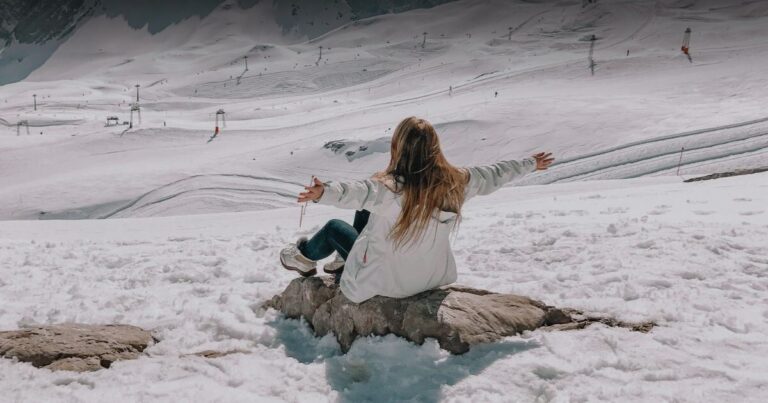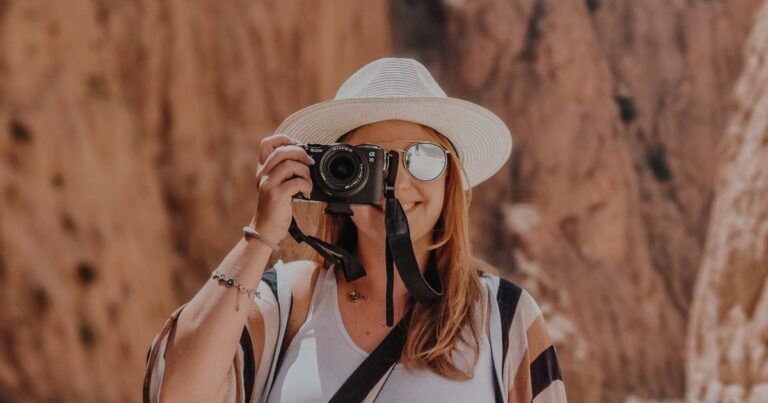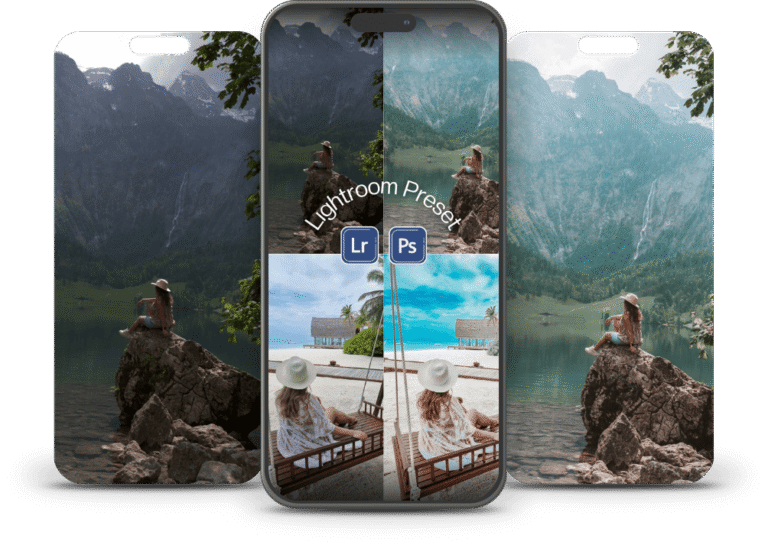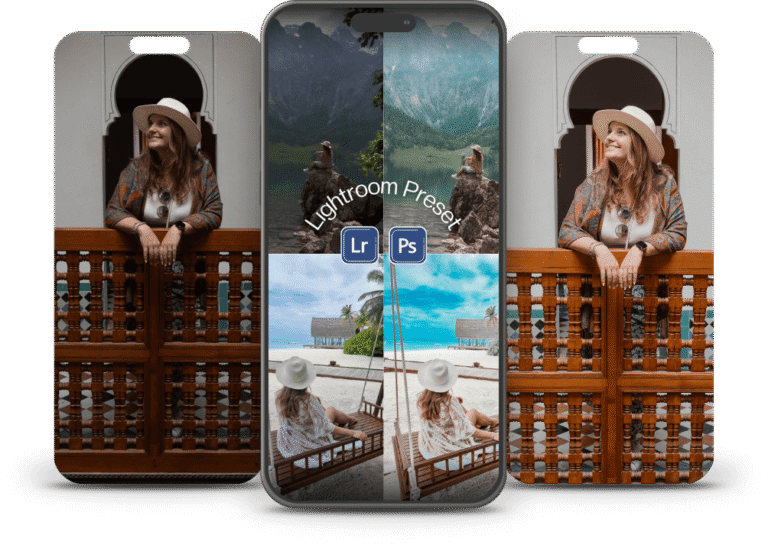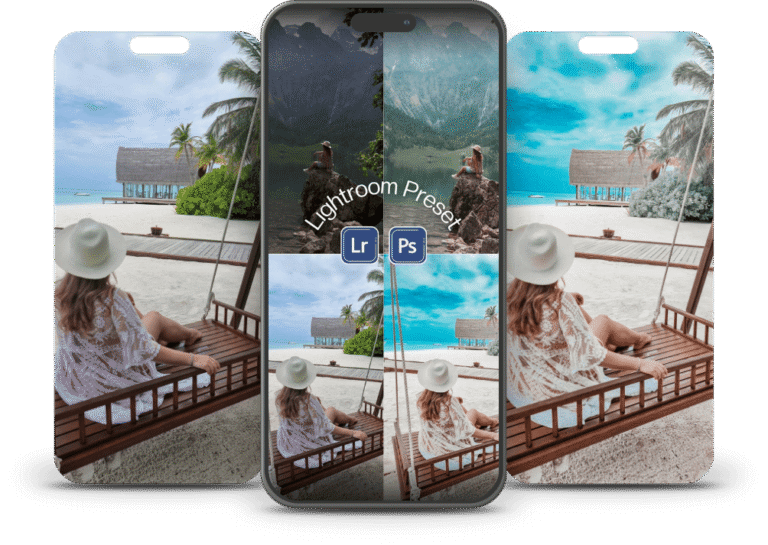Why Visit Marrakech?
Marrakech is one of Morocco’s photogenic cities. Think centuries-old architecture, the aroma of spices, and golden sunsets over terracotta rooftops. It’s a haven for travel photographers and cultural explorers.
Best Time to Visit Marrakech
The best times to visit Marrakech are in the spring and fall. March, April, May, September, and October offer the most pleasant weather. Days will be warm and nights will be cool and you’re less likely to have rain on the forecast. I personally visited in June and the weather was hot, but still bearable.
What to Pack
- Lightweight, modest clothing (be aware)
- Comfortable walking shoes
- Hat and sunscreen
- Camera gear and plenty of memory cards
- Important Tip:
Respect local cultural norms. Islam is central to life here, so both locals and tourists dress conservatively. There are no enforced dress codes, but covering a bit more of your body will avoid stress and anyone feeling uncomfortable.
Day 1: Arrival and Exploring the Medina
Morning: Arrive and Settle In
Fly into Marrakech Menara Airport (RAK). Depending on your arrival time, check into a riad (traditional Moroccan guesthouse) in the heart of the medina. Staying in the medina gives you immediate access to Marrakech’s historic core.
Recommended Riads for Photography & Comfort:
- Riad Yasmine – Famous for its Instagram-worthy pool.
- Riad Be Marrakech – Known for stunning interior patterns and hospitality.
- Riad Goloboy – Beautiful blue tones and relaxing atmosphere
- Important Note:
Just note, if you’re staying in the medina chances are the taxi can only take you so far as the streets aren’t wide enough for vehicles. You’ll most likely have to walk 5-10 minutes to your accommodations.
Afternoon: Jemaa el-Fnaa & Souks
Head straight to Jemaa el-Fnaa, the city’s central square. It’s filled with street performers, food vendors, and musicians. I didn’t quite like this area since they use a lot of animals and scams. Just from looking at them they will try to make you pay something. Be careful not to point any cameras at them, or else you will need to pay something too. From there, dive into the souks (markets), ideal for street photography and shopping for local crafts like leather, lanterns, and spices.
- Important Note:
The locals don’t like to be photographed, so be mindful once taking pictures. Even taking photos of their shops might upset some but don’t get intimidated. In the beginning it happened to me and it took me a while to take my camera out again which I regret.
Evening: Rooftop Dinner
Have dinner at Nomad, a modern Moroccan restaurant with a scenic rooftop view of the medina. Catch the sunset while photographing the city’s golden hues.
Photography Tip:
The golden hour (just before sunset) is ideal for capturing the rich tones of Marrakech’s red-hued buildings.
Day 2: Palaces, Gardens & Cultural Gems
Morning: Bahia Palace
Start your day at the Bahia Palace, a 19th-century marvel of Moroccan architecture. The tile work and intricate ceilings are a dream for detail-oriented photographers.
Afternoon: Majorelle Garden & Yves Saint Laurent Museum
Take a short ride to Jardin Majorelle, a botanical garden painted in electric blues and yellows. Adjacent to it is the Yves Saint Laurent Museum, showcasing fashion and art in a sleek, modern space.
- Pro Tip: Arrive early at Majorelle Garden to avoid crowds and get clean shots.
Evening: Hammam Experience
Relax after a busy day with a traditional hammam (Moroccan steam bath). Try Les Bains de Marrakech or Hammam de la Rose for a luxurious experience.
Day 3-5: Sahara Desert Excursion
If you’re up for a once-in-a-lifetime experience, embark on a Sahara Desert tour. Most tours begin early morning and include a drive through the Atlas Mountains, a stop at Aït Benhaddou (famous for films like Gladiator), and overnight glamping in the desert.
Key Highlights:
- Camel trekking or quad at sunset.
- Overnight in a Berber tent under the stars.
- Bonfire music and traditional Moroccan meals.
You’ll return to Marrakech late on the last day, so this option condenses city exploration slightly.
Day 6: Final Wander & Departure
Morning: Photography Walk & Shopping
Use your last morning to revisit the souks or stroll through quieter parts of the medina like Mellah, the old Jewish quarter. Grab any last-minute souvenirs and capture the medina’s morning rhythm.
Must-buy Souvenirs:
- Argan oil
- Handcrafted ceramics
- Moroccan tea sets
Afternoon: Cafe Culture & Departure
Have lunch at Café des Épices or Atay Cafe—both offering rooftop views and great lighting for flat-lay food photography. Head back to your riad, collect your bags, and make your way to the airport.
Travel Photography Tips for Marrakech
- Lenses: A zoom lens is ideal for all-in-one travel lens as you can get wise angle shots for arquitechture and zoom for more distant subjects.
- Respect locals: Always ask permission before photographing people.
- Lighting: Early mornings and late afternoons offer the best natural light.
Final Thoughts
A 6-day trip to Marrakech offers just enough time to dive into the city’s rich culture, indulge your senses, and—if you’re feeling adventurous—step into the magic of the Sahara. Whether you’re a passionate traveler, an avid photographer, or a curious first-timer, Marrakech is a destination that stays with you long after you’ve left.





